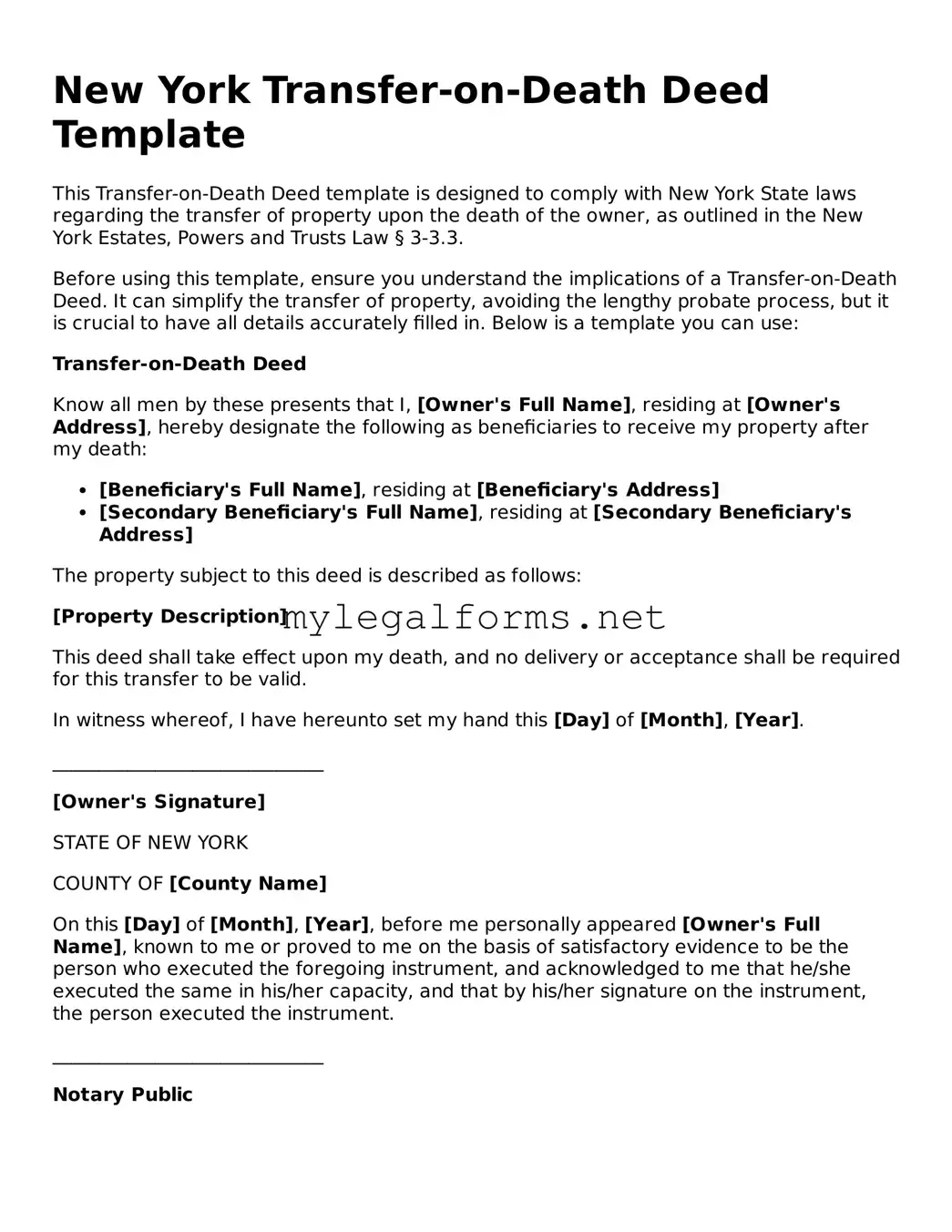New York Transfer-on-Death Deed Template
This Transfer-on-Death Deed template is designed to comply with New York State laws regarding the transfer of property upon the death of the owner, as outlined in the New York Estates, Powers and Trusts Law § 3-3.3.
Before using this template, ensure you understand the implications of a Transfer-on-Death Deed. It can simplify the transfer of property, avoiding the lengthy probate process, but it is crucial to have all details accurately filled in. Below is a template you can use:
Transfer-on-Death Deed
Know all men by these presents that I, [Owner's Full Name], residing at [Owner's Address], hereby designate the following as beneficiaries to receive my property after my death:
- [Beneficiary's Full Name], residing at [Beneficiary's Address]
- [Secondary Beneficiary's Full Name], residing at [Secondary Beneficiary's Address]
The property subject to this deed is described as follows:
[Property Description]
This deed shall take effect upon my death, and no delivery or acceptance shall be required for this transfer to be valid.
In witness whereof, I have hereunto set my hand this [Day] of [Month], [Year].
_____________________________
[Owner's Signature]
STATE OF NEW YORK
COUNTY OF [County Name]
On this [Day] of [Month], [Year], before me personally appeared [Owner's Full Name], known to me or proved to me on the basis of satisfactory evidence to be the person who executed the foregoing instrument, and acknowledged to me that he/she executed the same in his/her capacity, and that by his/her signature on the instrument, the person executed the instrument.
_____________________________
Notary Public
